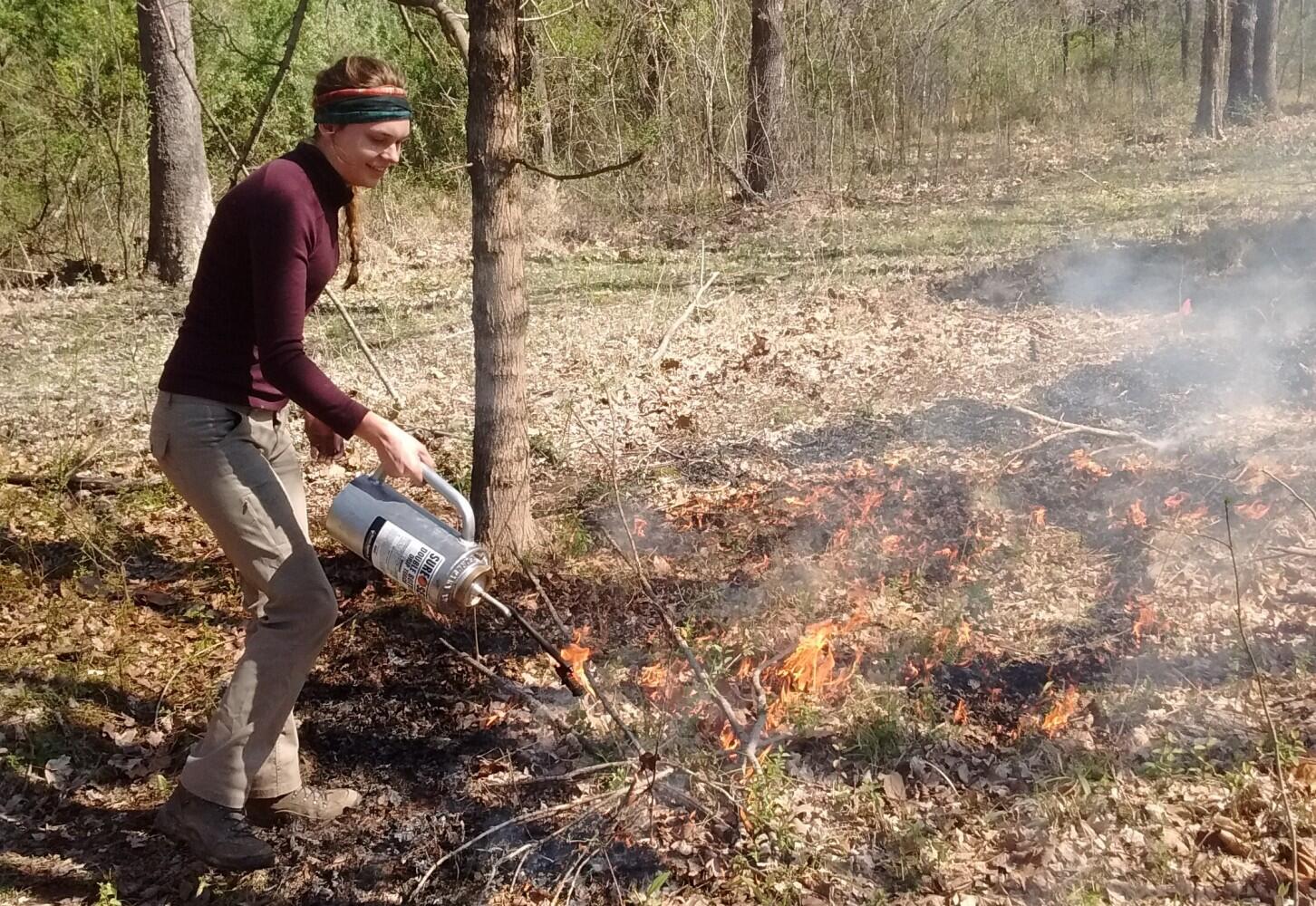Frequent fire too hot to handle for invasive plants

URBANA, Ill. – Land managers know one of the best ways to prevent forest fires is to set fires. Periodic controlled or prescribed burns can reduce the amount of flammable materials lying about on a forest floor, so when wildfires do start, they stay small.
Prescribed fires do more than that, though. New University of Illinois research shows frequent fires can help keep invasive plants in check by reducing nitrogen availability in soils.
“There's a lot of research that shows the opposite: Invasive species respond positively to fire. That's one of the ways – through disturbance – that many invasive species are thought to establish. And I think that's still true. But our research shows that repeated fire at a relatively high frequency can set in motion ecosystem changes that can suppress invasive species over time,” says Jennifer Fraterrigo, associate professor in the Department of Natural Resources and Environmental Sciences at Illinois and co-author on the new study.
When low-intensity fires move through a forest, they burn off dead leaves, branches, and other organic matter in the top layer of soil. Those materials typically contain a lot of carbon, but there are other nutrients important for plant growth, like nitrogen and phosphorus, tied up in that organic matter. Under normal circumstances, it can take a long time for those nutrients to break down and become available to plants.
When fires come through, the nutrients bound up in organic matter are released quickly. That can help plants, but only temporarily. With frequent low-intensity fires, the total nutrient pool is diminished over time. But it’s not always clear why that’s happening.
“It could be that nitrogen is volatilized, but based on our soils work, we think it might be related to the formation of pyrogenic organic matter, similar to charcoal, which is more difficult for microbes to break down. And once microbes become nitrogen-limited, they're more likely to use the nitrogen for their own growth, rather than make it available to plants.
“That's how the effect on invasive plants comes around, because many of these plants require high levels of nutrients to maintain their high rates of growth,” Fraterrigo says. “And so now, when you get into a situation where they're nutrient limited, invasive plants can no longer produce as much biomass.”
Fraterrigo and co-author Mara Rembelski made the connection between fire frequency, invasive plant growth, and microbial nitrogen cycling by comparing forest stands with different fire histories in southern Illinois. In some stands, managers had used prescribed fire treatments every 3-4 years between 1990 and 2010. The other stands, part of the same forest, had not burned for at least 50 years before the study.
To level the playing field, the researchers burned plots in both types of stands once in spring 2017, and then set to work measuring biomass and tissue composition of the invasive grass Microstegium vimineum and soil microbes during the following growing season. They compared unburned control plots with burned plots, but that one fire in 2017 didn’t make a major difference.
“The purpose of that burn in 2017 was to account for any confounding effects of time since the forest last burned. There's a lot of research that shows the effects of fire really change over time. We didn't want to have artifacts like that,” Fraterrigo says.
What really mattered was the legacy of fire frequency in each stand. For example, the researchers found aboveground biomass of Microstegium was 87% lower in stands subjected to frequent fire.
And, as expected, they found evidence that nitrogen limitation was responsible.
Not only was there 22% less dissolved nitrogen in the soil in the stands with frequent fire, plant and microbial tissues also showed a higher carbon-to-nitrogen ratio, indicating nitrogen limitation. Soil microbial enzymes targeting nitrogen uptake became more active in stands with frequent fire, as well.
“These enzymes are a really good indicator of how microbes are seeing resources. The enzymes are metabolically expensive to make, so you'd only want to invest in them to acquire resources you really need. So if you're energy or carbon starved, you're going to produce one set of enzymes, but if you're nitrogen starved, you're going to activate other enzymes,” Fraterrigo says. “Those nitrogen-starvation enzymes were what we saw in the frequent fire stands.”
Not surprisingly, pyrogenic organic matter, charcoal-like material resulting from incomplete combustion of biomass, was higher in stands with frequent fire. The researchers think this material, which keeps nutrients bound up and harder to access by microbes, explains the nitrogen limitation in those stands. They’re planning future studies to investigate the formation of pyrogenic organic matter more closely.
In the meantime, Fraterrigo says her results could help managers look at fire in a new way.
“Fire is a great tool, but managers have concerns about using it to control invasive plants because of this long-standing belief that invaders are promoted by fire,” she says. “But we’re providing new evidence that suggests if we burn frequently enough we could actually have the opposite effect. Is it license to go out and burn a lot? Not necessarily, because we still don’t really know how native species are going to respond. But it’s something to consider for invasive plants that fit the same profile as Microstegium.”
The article, “Frequent fire reduces the magnitude of positive interactions between an invasive grass and soil microbes in temperate forests,” is published in Ecosystems [DOI: 10.1007/s10021-021-00615-x]. The research was supported by USDA’s National Institute of Food and Agriculture.
The Department of Natural Resources and Environmental Sciences is in the College of Agricultural, Consumer and Environmental Sciences at the University of Illinois.